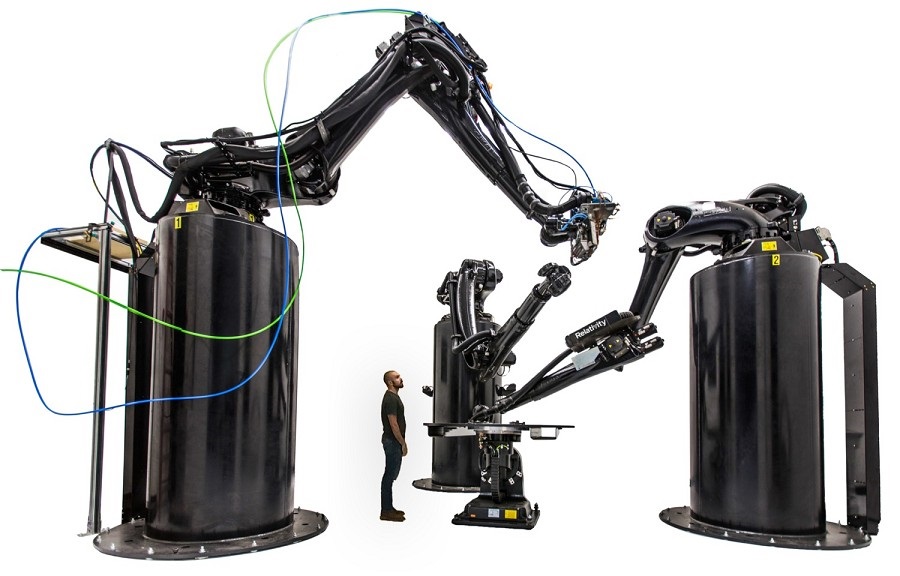Relativity Space’s focus on 3D printing and cloud-based software helps it weather the COVID-19 storm
“Just like in almost every other industry, there’s been a rash of layoffs among newer space startups and companies amid the novel coronavirus crisis. But Relativity Space has managed to avoid layoffs — and is even hiring, despite the global pandemic. Relativity CEO and founder Tim Ellis cites the company’s focus on large-scale 3D printing and its adoption of cloud-based tools and technologies as big reasons why his startup hasn’t felt the pinch.
Because Relativity’s forthcoming launch vehicle is almost entirely made up of 3D-printed parts, from the engines to the fuselage and everything in between, the company has been able to continue producing its prototypes essentially uninterrupted. Relativity has been classified an essential business, as have most companies operating in anything related to aerospace or defense, but Ellis said that they took steps very early to address the potential threat of COVID-19 and ensure the health and safety of their staff. As early as March 9, when the disease was really first starting to show up in the U.S. and before any formal restrictions or shelter-in-place orders were in effect, Relativity was recommending that employees work from home where possible.
“We’re able to do that, partially because with our automated printing technology we were able to have very, very few people in the factory and still keep printers running,” Ellis said in an interview. “We actually even have just one person now running several printers that are still actually printing — it’s literally a single person operating, while a lot of the company has been able to make progress working from home for the last couple of weeks.”
Being able to run an entire production factory floor with just one person on-site is a tremendous competitive advantage in the current situation, and a way to ensure you’re also respecting employee health and safety. Ellis added that the company has already been operating between multiple locations, including teams at Cape Canaveral, Florida, as well as at Stennis Space Center in Mississippi and at its headquarters in LA. Relativity also had a further distributed workforce with a few employees working remotely from locations across the U.S, and it focused early on ensuring that its design and development processes could work without requiring everyone to be centrally based.
‘We’ve developed our own custom software tools to just streamline those workflows, that really helped,” Ellis said. “Also, just being more of a cloud-enabled company, while still complying with ITAR and security protocols, has been really, really advantageous as well.’
In addition to their focus on in-house software and cloud-based tools, Ellis credits the timing of their most recent round — a $140 million investment closed last October — as a reason they’re well-situated for enduring the COVID-19 crisis. He says that Relativity not only managed to avoid any layoffs, while sending out new offers, but they’re also still paying all employees, including hourly workers, their full regular wage. All of this stems from a business model that in retrospect, seems prescient, but that Ellis says actually just has significant advantages in today’s global business climate by virtue of chance. Still, he does believe that some of Relativity’s resilience thus far signals some of the biggest lasting changes that will result from the coronavirus pandemic.
“What it’s really going to change […] is the approach to global supply chain,” he said. “I think there’s going to be a big push to have more things made in America, and then less dependence on heavy globalization across supply chain. That’s one you thing we’ve always had with 3D printing — not only is it an automated technology, where we can have very few operators still making progress even during times like like this and printing some of the first-stage structures of our rocket — but on the supply chain side, just having simpler supply chains with fewer vendors and different types of manufacturing processes means it’s much less likely that we’ll see very significant supplier and supply chain interruptions.’” Read More
Ready to start learning virtually today? Chat with us below.
Source: techhq
